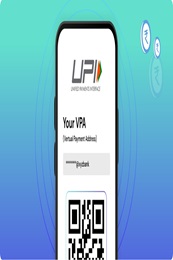Using UPI for Business: How It Compares With RTGS and IMPS
April 15, 2025

The global market for digital payments is predicted to increase at a compound annual growth rate (CAGR) of 11.2%. The advent of digital payments has revolutionised the way transactions are carried out, making it easier than ever to send and receive money. As your organisation grows, digital payment solutions allow you to handle bigger transaction volumes without compromising efficiency or security. You can easily enter new markets, add more payment options, and handle rising client demand.
Understanding UPI for Business
UPI is a payment system developed by the National Payments Corporation of India (NPCI). It enables businesses to transfer funds instantly using their smartphones. Unlike traditional methods like cheques or manual bank transfers, UPI offers a seamless and secure way to make payments.
Setting Up Your UPI Business Account
To get started with UPI, you need to set up a dedicated UPI ID linked to your business bank account. This unique identifier allows customers and clients to make payments directly to your account without the need for additional details such as bank account numbers or IFSC codes, enhancing security and privacy.
Creating a UPI ID is a simple process:
- Choose a UPI-enabled app: There are several popular apps available. Select one based on your preferences and install it on your smartphone.
- Link your bank account: Follow the instructions provided by the app to link your business bank account with the UPI app.
- Set up a UPI ID: Create a unique identifier for your business. It could be something as simple as your business name or a combination of your name and business type.
Once you have set up your UPI ID, you are ready to start accepting payments through UPI.
Accepting Payments Through UPI
UPI offers a range of options for customers to make payments to your business. By offering multiple payment options, you can cater to the preferences of various customers and ensure a seamless payment experience:
- QR code: Generate a dynamic QR code that customers can scan using their UPI-enabled app to initiate the payment. This method is particularly useful for in-store transactions, allowing customers to make contactless payments conveniently.
- UPI ID: Provide your UPI ID to customers, who can then enter it manually in their UPI app to make the payment. This method is suitable for remote transactions where physical proximity is not possible.
- Payment links: Generate payment links and share them with customers through email, messaging apps, or social media. Customers can click on the link and complete the payment using their preferred UPI app.
Comparing UPI With RTGS and IMPS
1. UPI vs. RTGS
While UPI allows you to instantly transfer money between different bank accounts using your smartphone, Real-Time Gross Settlement (RTGS) is a payment system that enables large-value fund transfers on a real-time basis. It is primarily used for high-value transactions for transactions above ₹2 lakhs, where the money needs to be transferred instantly and without any delay.
RTGS is an online, bank-based platform ensuring immediate credit to recipients' accounts during banking hours on working days. While RTGS is suitable for large transactions, UPI is more convenient for everyday and smaller payments.
2. UPI vs. IMPS
Immediate Payment Service (IMPS) is an instant interbank electronic funds transfer service available 24/7, including holidays. It allows you to transfer money using your mobile number and Mobile Money Identifier (MMID) or through internet banking.
Unlike UPI, IMPS requires the use of bank account details such as account number and IFSC code. UPI eliminates the need for sharing sensitive bank account information by using a UPI ID as a unique identifier. This not only enhances security but also makes it easier to receive payments from customers or vendors who may not be familiar with your bank details.
| Criteria | UPI | RTGS | IMPS |
| Transaction Limit | Varies between different UPI apps and banks. | Minimum transfer amount is ₹2 lakhs. No upper limit. | Minimum transfer amount is set by individual banks. |
| Availability | Available 24/7 | Operates during banking hours on working days. | Available 24/7 |
| Transfer Speed | Instant | Instant | Instant |
| Usability | Can be used for small value transactions, online shopping, bill payments, etc. | Suitable for high-value transactions that require immediate settlement. | Can be used for both person-to-person and person-to-merchant payments. |
Benefits of UPI for Business
Now that we understand the differences between UPI, RTGS, and IMPS, let's explore why UPI for business is gaining popularity:
1. Speed
UPI enables instant transfers, ensuring that businesses can receive payments quickly and efficiently. This is particularly beneficial for small businesses that rely on timely cash flows.
2. Convenience
With UPI, businesses can provide their customers with multiple payment options and customers can choose the method that suits them best.
3. Cost-effective
UPI transactions are typically lower in cost compared to other payment methods like RTGS. This makes it an attractive option for businesses looking to reduce transaction costs.
4. Security
UPI uses two-factor authentication, ensuring secure transactions. Additionally, with features like biometric authentication, businesses can provide an extra layer of security to their customers.
5. Scalability
As UPI continues to grow in popularity, more and more financial institutions are integrating UPI into their platforms. This makes it easier for businesses to scale their operations and reach a wider customer base.
6. Enhanced Customer Experience
By offering UPI as a payment option, you provide customers with a convenient and secure way to transact. This improves customer satisfaction and encourages repeat business.
7. Simplified Reconciliation
With each transaction recorded digitally, reconciling payments becomes effortless. You can easily track incoming and outgoing funds, simplifying your financial reporting and reducing the chances of errors.
8. Tax Compliance
UPI transactions facilitates the simplification of tax compliance paperwork. Viewing your transaction history and creating reports is simple. The burden of tax compliance is lessened as a result.
Final Thoughts
In conclusion, leveraging UPI for business transactions offers numerous benefits. To harness the power of UPI for business purposes, explore the seamless banking solutions offered by Ujjivan SFB.
Enjoy easy banking with Ujjivan Small Finance Bank. Save more with our high-interest Savings Account and Deposit products. Need cash for your business or personal needs? Apply for MSME Loans or Micro Loans with us – we offer competitive rates and quick disbursal. We also offer vehicle loans and home loans tailored for your unique requirements. Experience a smooth banking journey with Ujjivan SFB!
FAQs
1. Can I use UPI for business if I don't have a physical store?
Yes, UPI is suitable for both online and offline businesses. Whether you operate from a physical store or have an online presence, UPI offers a versatile payment solution.
2. Are there any transaction limits for UPI payments?
Yes, various limits are imposed on UPI transactions for security purposes. The limits may vary depending on your bank and the UPI app you use.
3. Can I link multiple bank accounts to my UPI ID?
Most UPI apps enable linking multiple bank accounts to a single UPI ID, allowing seamless transaction management across different accounts.
4. How long does it take to set up a UPI ID for business?
UPI ID setup is a quick, easy process that requires choosing your preferred app, linking your bank account, and creating a unique ID.
5. Is it safe to share my UPI ID with customers?
Yes, sharing your UPI ID is safe as it does not reveal any sensitive information like bank account numbers or IFSC codes.
6. Can I track my UPI transaction history?
Yes, most UPI apps provide transaction history features that allow you to view your past transactions, including details like date, time, and transaction amount.
7. Can I use UPI for recurring payments?
Yes, UPI supports recurring payments through features like AutoPay. You can set up automatic debits from your bank account for regular payments.
8. What happens if I enter the wrong UPI ID while making a payment?
It's crucial to double-check the UPI ID before confirming a payment. If you enter the wrong UPI ID, the transaction may fail or be directed to an incorrect recipient.
9. Can I use RTGS for small-value transactions?
No, RTGS is primarily used for high-value transactions where the minimum transfer amount is ₹2 lakhs.
10. Can I receive payment notifications for each transaction made through UPI?
Yes, most UPI apps provide real-time payment notifications that alert you whenever a payment is received into your account.
Latest Blogs

Telangana Housing Board & KPHB Colony: A Guide to Affordable Urban Housing in Hyderabad
March 14, 2025
As Telangana continues its rapid urbanisation journey, two key housing entities—Telangana Housing Board (THB) and Kukatpally Housing Board Colony (KPHB)—have played critical roles in shaping the state's real estate ecosystem.

Does Checking CIBIL Score Frequently Lower Your Credit Points?
April 07, 2025
Imagine you're planning to apply for a home loan, a credit card, or even a car loan. Naturally, you want to ensure your CIBIL score is in good shape before proceeding.

Explained: Can NRIs Buy an Agricultural Land in India?
April 03, 2025
Real estate investment is often a top priority for Non-Resident Indians (NRIs) looking to retain strong financial ties to India.

How to Improve Your CIBIL Score from 600 to 750: A Step-by-Step Guide
April 02, 2025
Your CIBIL score is like your financial reputation—banks check it before approving loans or credit cards. If your score is hovering around 600, you might face difficulties in securing credit or may get loans with higher interest rates.

What Happens When You Leave Your Savings Account Unused?
April 01, 2025
Imagine waking up one day to find that your hard-earned money is locked away and inaccessible. Sounds stressful, right? This is precisely what happens when you leave your Savings Account inactive for too long.





